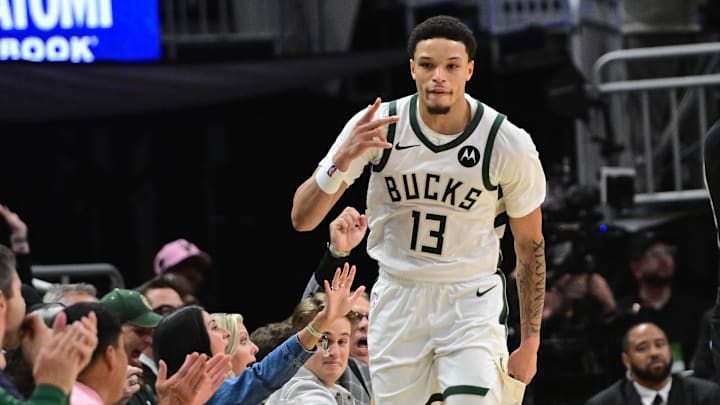Every time the Milwaukee Bucks tip off, a segment of NBA fans and analysts expect Ryan Rollins to regress to the mean. Surely a player who had never averaged more than 6.2 points per game through three seasons can't be playing at an almost star-caliber level in year four.
The skeptics who insist Rollins will hit some kind of wall are running out of reasons to believe he will, however, as the 23-year-old continues to solidify his place as a rising star.
Rollins postsed a career year in 2024-25 with averages of 6.2 points, 1.9 rebounds, 1.9 assists, 0.8 steals, and 0.9 three-point field goals made in 14.6 minutes per game. He impressed Bucks fans with flashes of potential, but by no means did he look the part of a star in the making—at least not to the naked eye.
Rollins has thus taken even diehard fans by surprise with averages of 18.3 points, 5.9 assists, 3.9 rebounds, 1.6 steals, and 2.4 three-point field goals made in 31.6 minutes per game in 2025-26.
In addition to doubling and even tripling many of his averages, Rollins is playing with remarkable consistency. Perhaps some of his shooting marks will slightly decline based on past examples of his baseline level of play, but there's just as much reason to believe he can sustain his success when considering that same factor.
Rollins may be making a gargantuan leap on a per-game basis, but his averages are actually relatively close to what he's previously managed when evaluating his statistical output per 36 minutes.
Ryan Rollins is keeping the hype train going with consistency and effort
Rollins boasts career averages of 17.4 points, 5.4 assists, 4.8 rebounds, 1.9 steals, and 2.3 three-point field goals made per 36 minutes. Those are rather similar numbers to the 20.9 points, 6.7 assists, 4.4 rebounds, 1.9 steals, and 2.8 three-point field goals made he's averaging per 36 minutes in 2025-26.
With minimal statistical increases between his fourth NBA season and his career averages on a per-36 basis, there's statistical support for the belief that Rollins is making a legitimate leap.
Furthermore, Rollins has scored at least 20 points in seven of his 16 games played, attempting 15 or fewer shots in four of them. That should disprove the notion that his success is a product of unsustainable volume rather than a sincere step forward.
It's also worth noting that three of the nine exceptions were his first three appearances of the season. During that time, Rollins averaged 12.0 points, 4.7 rebounds, 4.3 assists, and 2.7 steals in 31.0 minutes per contest.
Since then, Rollins has scored at least 20 points in 53.8 percent of his appearances and tallied a minimum of five assists in 69.2 percent of his games played. Suffice it to say, consistency has been a strength.
Ryan Rollins' per-36 production, efficiency have only slightly increased
The last remaining counter to sustainability is that Rollins' slash line of .511/.443/.800 couldn't possibly last across a full season. Perhaps that theory is correct, but it's worth noting that he boasts career shooting marks of .494/.425/.806 that are eerily similar to what he's currently producing.
With this in mind, the numbers are clearly painting the picture of a player who simply needed more minutes and volume to make the leap he's in the midst of.
If any skeptics remain, they need only look at his closing stretch to the 2024-25 season. During his final 11 appearances from a season ago, Rollins averaged 11.9 points, 3.9 assists, 3.0 rebounds, 1.0 steal, and 1.8 three-point field goals made in 24.3 minutes per game, twice exceeding 20 points and once reaching 10 assists.
With his breakout acting as more of a continuation of a developing trend than a truly unpredictable rise to glory, Rollins is giving even the most skeptical of critics reason to believe.
